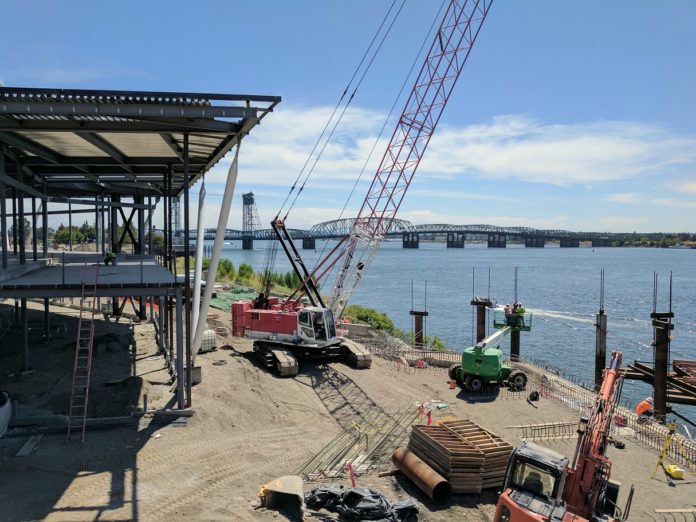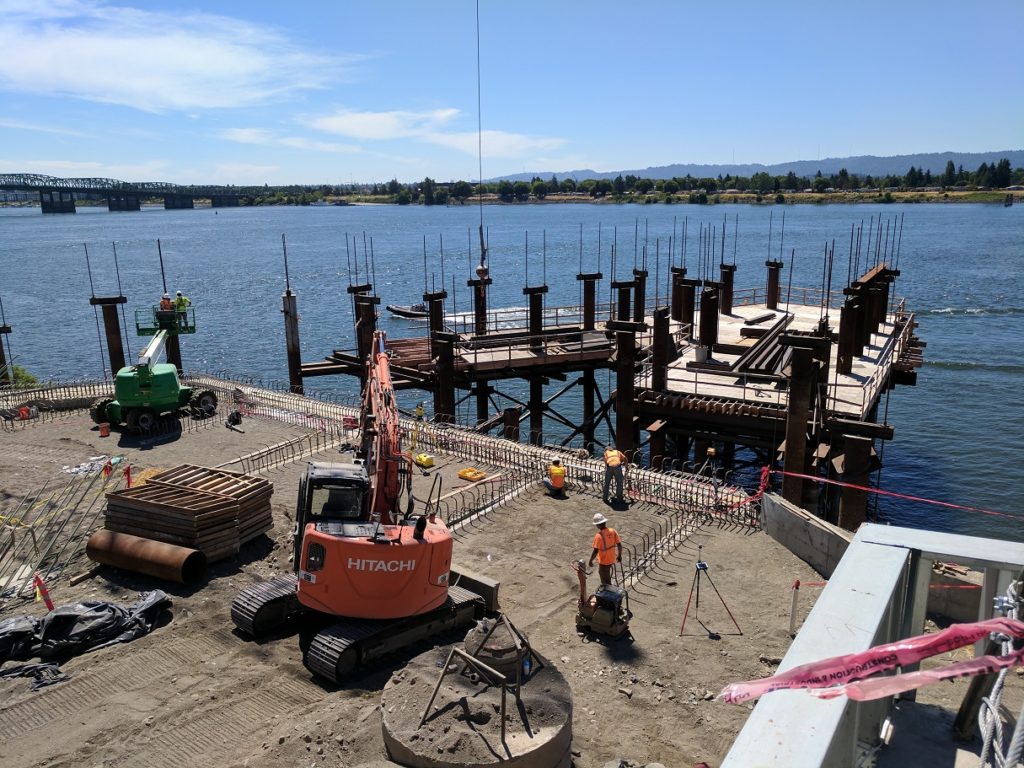With water levels lowered and challenges handled, construction along the Columbia River at the $1.3 billion Waterfront Vancouver development has kicked into high gear.
Tualatin-based Gramor Development continues to make progress on the urban and residential side of the 32-acre project, while the City of Vancouver maintains work on the 7.3-acre Waterfront Park and the cable-suspended Grant Street Pier.
Related to the park and pier, Julie Hannon, Vancouver Parks and Recreation director, said the unpredictability of water levels and the concern of protecting fish habitats created a slight stall in construction.
“In the Columbia, you can only work in the water from October 1 to December 31 because of fish habitats,” said Hannon. “We had to install a cofferdam, which is like a big structure that basically keeps the water out so we can work in the dry all year.”
Barry Cain, Gramor Development president, said his team also faced delays in construction stemming from this past wet winter.
“The only hiccup is on Block 6 and Block 8,” said Cain. “Those two are ones that have underground parking, and there was a little bit of a delay there because the river level was at kind of historic highs. That made it impossible for us to build the parking garages, but they are all dry now and that work is progressing.”
With work speeding up, the City hopes to have the east side of the park up to the pier completed by mid-2018, with west side completion following. Meanwhile, Gramor Development hopes to have several restaurants open along the waterfront (Block 9 and Block 12) by July 1, 2018.
“Between the restaurants, the park and the river, we’re going to have an attraction that really does not exist in the Portland-Vancouver metropolitan area right now,” stated Cain.
Winner of the 2017 Top Projects “Catalyst Award” for overall impact on future economic growth, community development and community involvement, Vancouver’s Waterfront Park and the Grant Street Pier have been designed and developed in concert with the commercial side of the project from the beginning.
Cain and Hannon agreed that without the public park component drawing visitors from around the region, the Waterfront Vancouver project simply wouldn’t carry the same weight or significance.
“You can put development anywhere,” said Hannon. “I think if the park wasn’t there, it would be developed closer to the river, but for the community benefit, it’s going to be huge to have a 7-acre park right along the river.”
Cain said the park represents one of the three components necessary to make the project an attraction like no other.
“There’s nothing like it where you’ve got all these restaurants and the park and the Columbia River kind of all drawing people down there,” he said.
Apart from any man-made development that can be done to enhance the south-facing waterfront, both the City and Gramor reflect the sentiment that the integral part of the project remains the most natural resource there is: the Columbia River.
“From our standpoint, our history is in retail development more than anything else, so we’re used to having anchors that bring in the traffic and then everybody works off of that,” said Cain. “In this case, our main anchor is the Columbia River, and it always has been.
“The Columbia River is the most significant natural resource that this metropolitan area has, and we’re on it. So, we wanted everybody to come to that anchor,” he added.
“For a long time the Columbia River and access to this part of the Columbia River was really the backdoor of the city, and we want to turn it into the front door of the city,” concluded Hannon.






